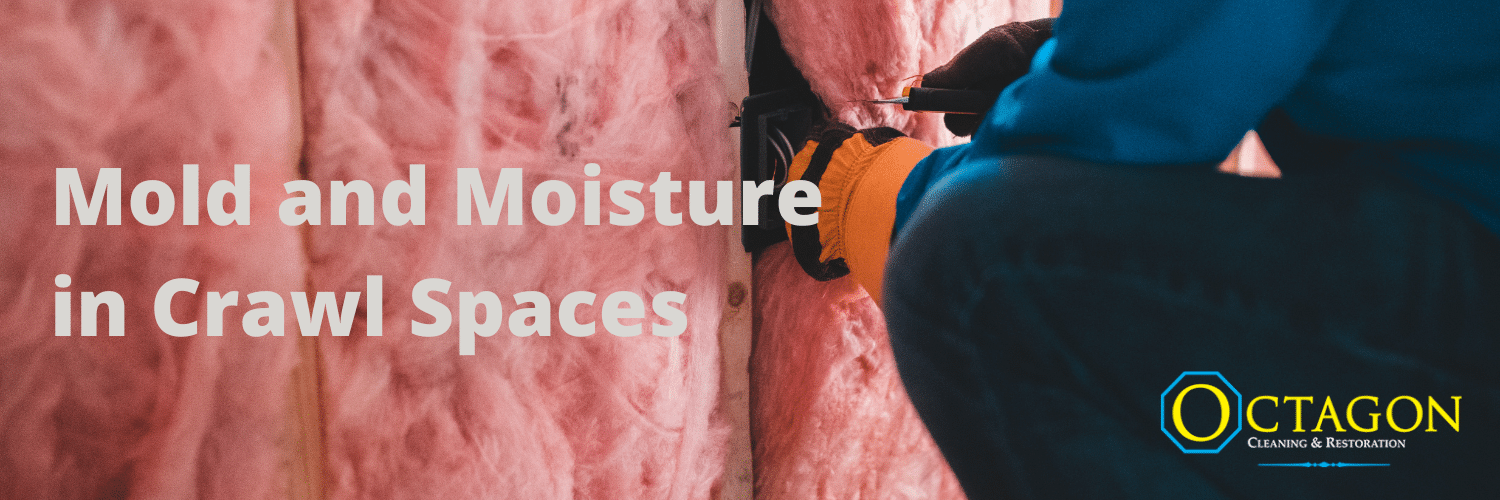
Crawl spaces can be vulnerable to moisture and mold. The original reason they began being built was to simply provide a buffer between your home and the wet ground below. However, in modern times we realize they are (unfortunately) a space that collects water and is great at holding in the humid air. This brings issues such as structural damage, mold growth, and even pest infestations.
While crawl spaces ventilation methods exist, these areas differ from the rest of the living space. Considering they are underground, ventilation won’t work the same “down there” as in other parts of the house. These systems are slowly being phased out of standard building practices.
Let’s say you have crawl space vents during a rainstorm or a bout of humid weather. This won’t help with keeping things dry whatsoever. With condensation developing and remaining on surfaces, mold will inevitably begin to grow in these conditions.
How Does Mold Grow in Crawl Spaces?
First let’s discuss what can cause microbial growth in crawl spaces to happen in the first place.
Vapor Barriers (Well, a lack of)
This is more common in cooler climates (and not necessarily needed in every crawlspace), but vapor barriers make a huge difference in the amount of moisture in the air within your crawl space. By preventing diffusion of moisture from the soil to the air, moisture will remain in the dirt instead of building up and possibly condensating on your framing, insulation, etc. This alone is a solid preventative measure to contain moisture levels.
Flooding
Crawlspace flooding periodically shouldn’t cause significant problems if it isn’t too often. Heavy rain for days on end will cause an elevated water table – this is the area between the topsoil (dry) and the ground below that (saturated). After (for example,) snow melts, the water table is high and because the ground cannot hold any more of that water, it seeps into your foundation cracks because it simply has nowhere to go.
What are Some Mold Prevention Measures?
Preventative measures need to be taken.
- Ensure that your foundation is in good condition; any cracks should be repaired as soon as they are discovered.
- If you find that you might have drainage issues then you may need a professional to assess any problems with grading. A sump-pump can be a good way to stay ahead of flooding – when the water level reaches a specific level it will turn on by itself and then pump the water out!
- As for moisture issues (not necessarily flooding), a vapor barrier is probably your best option. Again, this will help prevent moisture from moving from the soil to the crawl space and up into your home.
When You Need a Professional
Crawl spaces are finicky areas of the home, but they can be controlled. If you need water mitigation or mold remediation from your crawl space, Octagon is proud to offer these services in Maine and New Hampshire. Contact us for a free inspection!

